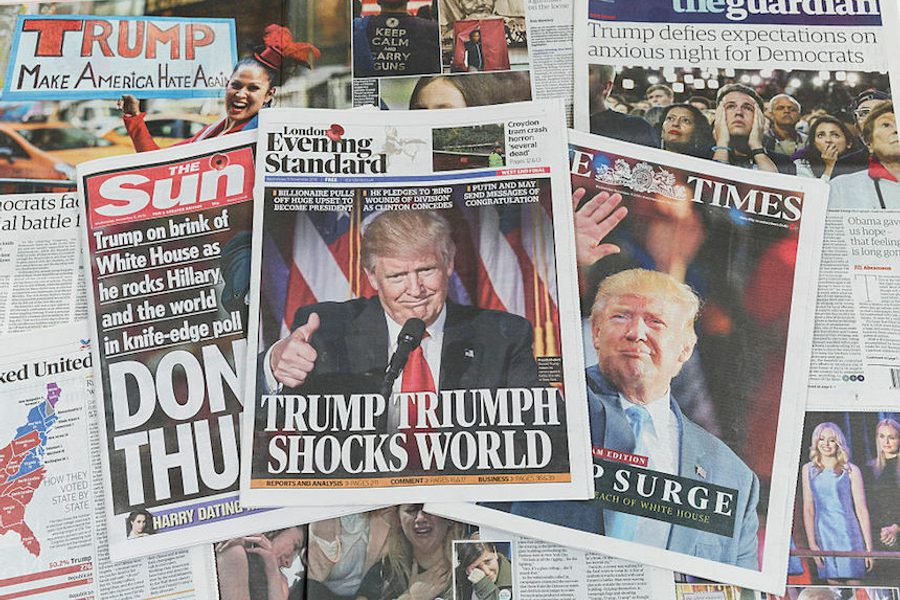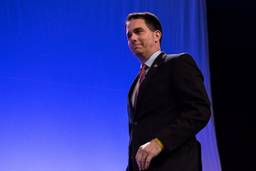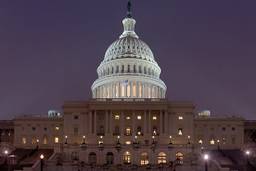Well, That Happened: Let’s Try to Start Figuring Out How
A look at the polls suggests race, region and low turnout played important roles.
Steven Rosenfeld, AlterNet

This post first appeared at Alternet.
The glass ceiling so many Democrats thought Hillary Clinton would shatter to become the first woman president came crashing down Tuesday night in what can only be described as a devastating and unexpected defeat for progressive hopes, values and agendas.
Clinton supporters grew numb as the night unfolded and the presidency increasingly grew within reach of Donald Trump, the Republican who models racism, misogyny, white supremacy and gratuitous violence, and marches lockstep to a far-right social agenda embraced by evangelical Christians and an economic agenda favoring privatization and vastly reduced social safety nets. As the state results came in, the Democrats did not gain the five Senate seats needed to retake that body’s majority, meaning the next Congress will be dominated by Republicans in both chambers.
There were no easy or believable explanations for Trump’s victory and Clinton’s crushing defeat. Clinton triumphed in the presidential debates and was riding a growing wave of support, pollsters said, until FBI director James Comey dropped a bombshell 12 days ago that the FBI was reopening its investigation into her emails, and then last Sunday said they found nothing new or noteworthy. Clinton’s momentum was stopped, but she slowly began climbing back, the pollsters said, even if the race for the White House and Senate contests were tightening.
Virtually every pollster, working for the media, universities, both political parties and candidates, got it wrong. They said Clinton had many paths to the presidency, while Trump had only a narrow road via must-win states like Ohio and Florida. Democrats vastly outspent Trump. The Democratic Party ran one of its largest voter registration and turnout operations ever. Meanwhile, Trump did not embrace his party’s establishment, ignored their messaging and spurned their get-out-the-vote tactics — and many Republicans said they neither expected nor wanted him to win.
The immediate explanation given Tuesday night by pollsters, analysts and political operatives was Tuesday’s vote was a populist rebellion by aggrieved working-class whites across forgotten America. Look at the county-by-county map of where each candidate won, and Trump took vast stretches where the economy is bleak, manufacturing has left for overseas and people feel overlooked by coastal economic and political elites. That explanation invites the big question of whether Bernie Sanders’ populist message might have fared differently if he had been the party’s nominee.
But nobody gave a good reason for why people didn’t see Trump’s train coming. Obviously and ominously, people did not like Clinton for any number of reasons and sided instead with a vulgar showman who promised them the proverbial moon and played on racial resentments. He did not have a policy agenda, but recited taunts that apparently soothed Americans who felt aggrieved: build a border wall; deport 11 million migrants and their 5 million citizen children; ban Muslims from entering the country; get even with America’s economic competitors by ripping up trade deals; force allies to pay for NATO; and repeal new social programs like Obamacare.
There will be all kinds of theories in the news Wednesday. At 2am ET Wednesday, Clinton campaign chair John Podesta thanked the crowd and said “she is not done yet” and the vote counts would resume in the morning. At that point, according to the New York Times, Trump had 266 Electoral College votes and Clinton had 218 Electoral College votes. Michigan, Wisconsin and Arizona had yet to finish their counts. At 3am ET, the Times said Trump won Wisconsin and had 279 Electoral College votes — 270 are needed to win. Shortly thereafter, Clinton called Trump and conceded.
There are so many unanswered questions. Americans who did not side with Trump will be bracing themselves as the reality of a self-serving strongman who traffics in lies and insults as normal behavior prepares for the presidency. The first question remains, what happened and how did he do it? The next is, what will he and the complete Republican takeover do? The election already has shown many Americans that they did not know their country very well.
Many pundits will be parsing the swing state media exit polls for clues and trends about why whites flocked to Trump — not that polls should be so quickly believed after the unexpected Democratic rout. One statistic worth paying attention to, however, is the overall voter turnout, which wasn’t discussed in Election Night coverage. The Times reported 112.5 million people voted for president in 2016. In 2012, that number was 127 million, and in 2008 it was 130 million. Lower turnouts enable more extreme voter factions to have bigger sway.
There will be many reasons given for Trump’s victory. No single factor will tell the entire story. But it could be that one factor leading to that surprisingly low presidential turnout was Americans were sick of the endless campaign and all the excesses in the political system. Thus, millions of people simply didn’t vote in 2016 — enabling Trump to repeatedly win states by 100,000 vote margins.
Trump Led for Most of the Night
From the very first returns, Trump was ahead in the Electoral College vote and stayed there. The first states reporting were Indiana, Kentucky, West Virginia and Vermont. Only tiny Vermont voted for Clinton.
As the state returns continued, it became clear that Trump’s support was wider and deeper than Democrats expected. On the East Coast, where voting ended first, very close counts in Virginia and Florida were the most striking examples of this. Clinton’s campaign expected Virginia to be solidly for them, especially with home state Sen. Tim Kaine as its vice-presidential nominee. But as the vote count came in, it became clear that Trump was winning outside of the eastern suburbs that surround Washington, D.C. At 10:10pm ET, Clinton led by only 26,000 votes with 94 percent of the vote count in, a number that went up to 59,000 before she was declared its winner. (Clinton eventually was boosted by the D.C. suburbs to a 180,000-vote margin.) But as in last spring’s Republican primaries, Trump proved many more people than anyone expected were willing to abide by his excesses or embrace them.
In Florida, with 99 percent of the vote count in at 10:10pm, Trump was 135,000 votes ahead of Clinton, out of more than 9 million votes tallied statewide. Before a Trump victory was called just before 11pm, Green Party candidate Jill Stein had 63,000 votes there and Libertarian Gary Johnson had 203,000 votes, underscoring that third-party votes do matter. Or, at the very least, both major party candidates were not embraced by millennials, the exit pollsters said, who voted instead for Johnson and Stein.
But the more important finding in the exit polls was different racial groups were sharply divided along partisan lines, with large percentages of whites voting for Trump and large percentages of people from communities of color voting for Clinton. Because there are more whites in most states than people of color, white voters who turn out can prevail as a block — even if the non-white turnout percentages are up dramatically up from the past. That apparently was the case in Florida, and also in Georgia, where exit polls found 85 percent of blacks and Latinos voted for Clinton, while 80 percent of whites voted for Trump.
Longtime Democratic pollster Celinda Lake added another factor with Trump and Florida. She said he had a different relationship with Florida voters, who knew him and basically ignored his showboating — the antics and insults that upset many others across America. She didn’t explain why so many of the nation’s pollsters — who repeatedly said he had a very narrow path to the presidency and Clinton had many ways to get there — were wrong.
The other big factor discussed late Tuesday was how Clinton’s supposed blue-state firewall in the upper Midwest — states like Michigan and Wisconsin that repeatedly have elected Democrats to the White House in recent decades — unexpectedly crumbled. There was some evidence that the campaigns knew Michigan was in play, as they both sent their candidates there in the race’s final days. There will be talk that the 2016 election saw a revival of what was once called Reagan Democrats — blue-collar workers who voted for that Republican candidate in 1980. It bears mentioning, however, that Bernie Sanders won the Democratic primary in Michigan — raising the question, yet again, of whether Trump’s anti-trade message was pivotal.
In Wisconsin, where polls also showed Clinton and former Democratic Sen. Russ Feingold both ahead, Trump was leading by 71,000 votes and Feingold lost his rematch with the Republican incumbent. Wisconsin Public Radio reporters said Democrats win that state by the voter turnout in the cities and suburbs surrounding Madison and Milwaukee. Clinton was leading in both regions, but again, not by enough to offset the overall statewide vote count.
Ralph Reed, the longtime evangelical Republican organizer, said conservative Christians played a big role in boosting Trump, especially because of his pledge to appoint anti-choice Supreme Court justices. In Florida, Reed said one in five voters was an evangelical, and 85 percent voted for Trump. In Georgia, he said one in three voters were evangelicals, and 88 percent voted for Trump, and in Wisconsin, one in six voters were evangelicals, and 71 percent voted for Trump.
Stepping back, progressives and Democrats are entering a new political era with few known precedents. The closest might be the election of Reagan in 1980 and George W. Bush in 2000, where Democrats never imagined either of those men would become president. In both cases, it took Democrats years to turn around the messes left by those administrations — a gaping national debt created by Reagan’s tax cuts and military build-up, and the war in Iraq and global financial market crash of 2008.
Americans can only hope Trump and the congressional Republicans will not wreak comparable or worse havoc on the country and the planet. But no one should hold their breaths. Tragically, Hillary Clinton didn’t break through the glass ceiling; it fell on her and on all the progressives and Democrats who fervently came around to support her candidacy. In its place stands Trump and the modern Republican Party, which together represent the most abhorrent forms of leadership and have an incredibly destructive political agenda.







